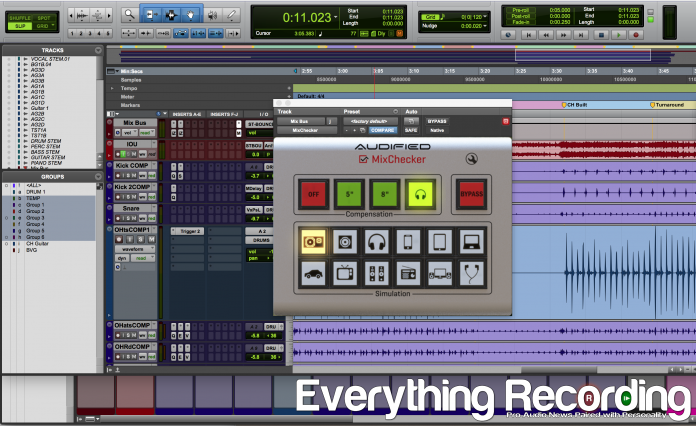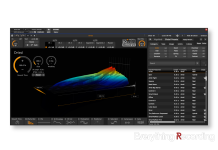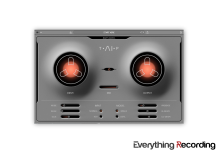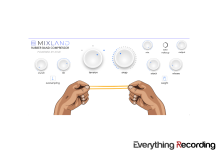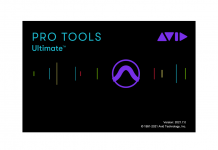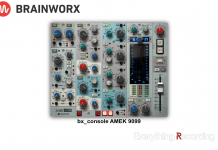We all have multiple speakers in the studio to reference data. We constantly worry about how our mixes will translate and spend precious time exporting, emailing files to ourselves, running to the car, listening on the phone, and repeating until you’ve used up storage space on your email and other devices. It’s an extremely nerve wracking process that needs to happen to ensure audio sounds good across all mediums. What if there were a plugin that models these devices and you could monitor all straight from the comfort of your control room without moving from that ergonomic mesh back chair you dropped $300 on? Audified has come up with a solution with “MixChecker”.
MixChecker is a plugin that goes at the end of your mix buss and emulates different common listening devices for consumers, thus eliminating the need to go on a listening world tour to experience how your track sounds in each situation. It is available in AU, VST, and AAX, for both Mac and PC, and uses iLok for registration. The concept is really straightforward, but is it effective?
The interface, although a little dated looking, is simple – at the top you have your compensation section that will work to help flatten the frequency response for either 5” mixing monitors, 8” mixing monitors, or headphones. This isn’t exact science due to the many different types of monitors and headphones on the market, each having different EQ curves, but it helps. If you are listening through high end monitors it is best to leave this off. To the right of the compensation section is the “Bypass” section which completely disables processing on the plugin. Below the “Compensation” section is the “Simulation” section. This features 12 different types of common everyday devices in which most audio is being played through. You are given the choice of:
Classic Studio Monitor (assuming NS10s)
Classic Cube Monitor (Auratones)
On Ear Headphones
Smartphone speaker
Tablet speaker
Laptop Speaker
Car Audio System
TV Speaker
Micro HiFi
Radio
Desktop Speakers
Earbuds
Audified does no go into the specifics of how this is accomplished but it is assumed that phase shifting, EQ, and some impulse responses are at play to emulate these different types of systems. Simply click on each icon to experience what Audified considers models of each device. That’s pretty much it. So how does it perform while in use?
The smartphone model is great. I ran an A/B comparison by playing a file on my cell phone and on my Pro Tools system using MixChecker on the Cell Phone setting. I am using a set of Focal Solo 6Be speakers so compensation was not being used. Instantly my speakers sounded eerily similar when switching between the phone and MixChecker, almost like the speakers had shrunk. There were times when I would lose track of which was the cell and which was mix checker. The desktop speaker setting was very close to my Logitech speakers I use to check mixes with as well. I found the “Classic Studio” monitor to be helpful in targeting mid range balance issues as well but since I do not own a pair of NS10’s cannot attest to the accuracy of the model. The tablet and laptop speaker settings were OK, but I didn’t find myself using them as much as the other 3 mentioned above.
Upon initially using MixChecker, I found that a few of the models sounded a little off. Upon researching and talking to the folks at Audified, I was informed of something that changed my perspective. Upon using these settings, they may sound lofi and degraded, this is because Audified modeled some of the more “worst case” scenarios. The headphones were cheap stock earbuds that come with cell phones and the car audio system was from a system over 10 years old. I was very skeptical of this explanation but once I actually tracked down an older car and dug out some old earbuds, the models started to line up a little more. This is where I figured out MixChecker is more of a tool to pick out situations where audio quality is not ideal, not on devices people who enjoy high end equipment use.
The only model I didn’t have this experience with was the TV Speaker setting. This model seemed more of a very very old CRT TV which virtually aren’t used anymore. With the quality of audio coming out of TVs these days, the “TV Speaker” model was more of an effect preset of an old TV than the frequency response of today’s flat screens. Although an older TV Speaker can be useful in targeting frequencies, an updated TV Speaker would be helpful to have. Also seeing that a lot of mediums use one speaker, I’d like to see a “mono” selection to better emulate these situations. While we’re on the topic of improvements, I’d also like to see various streaming presets as this would help tremendously with most music going to the cloud. Also, a Jukebox model or an In-Store Sound System would be extremely helpful for bars and retail store references. I’ve been told by Audified that improvements are on the way so hopefully these will show up in future revisions.
Another completely different application MixChecker could be used is as presets during mixing as an effect. It was mentioned the TV Speaker had the effect of an old television – this could be used as a quick preset for a vocal effect. The cell phone could be used in post for editing audio for video as well.
Overall:
What it does do right, it does great. The cell phone, classic studio monitor, and desktop speakers were spot on. This helped by giving accurate perspective with multiple types of speakers. The Car Audio gives a very good picture of some of the less ideal monitoring situations but a modern TV Speaker would have been more helpful as well to hear what music would sound like on commercials, but the current TV Speaker model was a little exaggerated and dated.
Clocking in at $149.00, it’s a little bit of a stretch on price point but since Audified is looking to add improvements, these features could make the product a little more worth the price tag.
For more information, and to purchase, visit https://shop.audified.com/products/mixchecker?variant=20301040967



